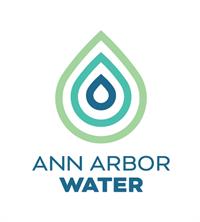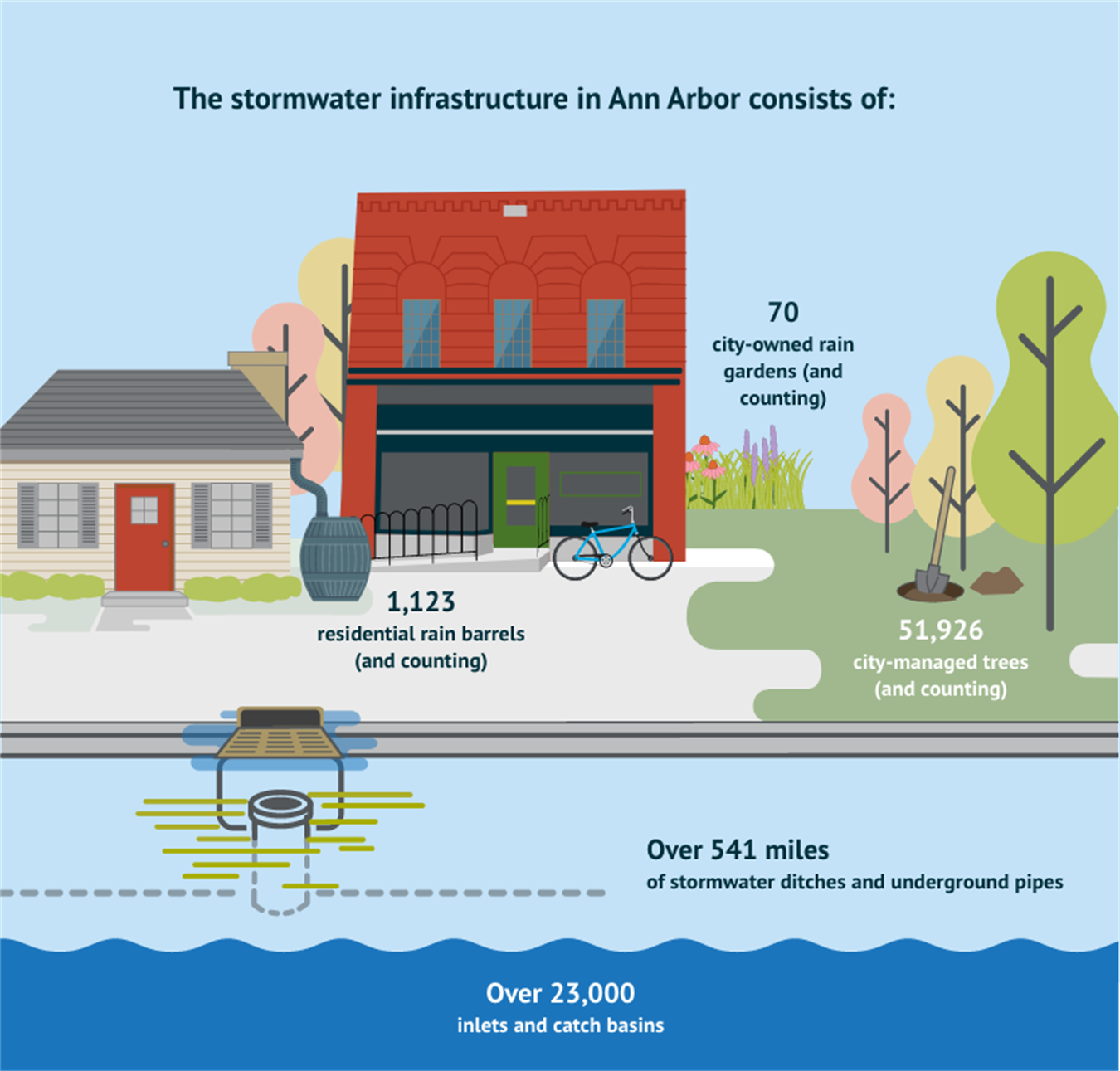Our Mission

Ann Arbor's stormwater system was developed over 100 years ago to meet the needs of a smaller, drier city. Precipitation in Ann Arbor has increased more than 45% over the past 50 years, which amounts to more than 40 University of Michigan “Big House” football stadiums worth of additional water every year draining into the Huron River.
Rainfall that lands on rooftops, lawns, farms and pavement picks up whatever debris and pollutants may reside there and runs into creeks, streams, rivers and lakes. Studies of stormwater outflows have revealed concentrations of heavy metals such as dissolved copper and zinc at levels exceeding acute and chronic toxicity criteria.
Our mission is to help prevent contaminated stormwater run-off from polluting the Huron River. We work with local partners such as the
Washtenaw County Water Resources Commissioner,
Huron River Watershed Council and
University of Michigan Environment, Health & Safety, to protect the environment, preserve and improve the quality our city’s primary source of drinking water, and ensure the beauty of the Huron River so it continues to be enjoyed today and for generations to come.

*Ann Arbor stormwater system, as of 2023, consists of 70 city owned rain gardens, 541 miles of ditches/underground pipes, 1,123 residential rain barrels and 51,926 city managed trees.
Our Vision
Stormwater management runoff is critical for Ann Arbor’s efforts to ensure the Huron River remains clean and beautiful as the centerpiece of Ann Arbor.
The city has identified about $160 million in potential projects to improve stormwater management in Ann Arbor in the coming years, with $56 million already included in the city's
2018-2023 Capital Improvements Plan. The list of stormwater infrastructure projects range from soil erosion and sedimentation control activities to maintaining sewers, manholes and catch basins as well as routine cleaning and repairing of the system channels.
Most recently, the city broke ground May 13, 2020, on the $9.4-million
Allen Creek Railroad Berm tunnel under the railroad tracks west of the Amtrak Station near Broadway Street, between Depot Street and the Huron River, to allow both pedestrians and stormwater to more easily reach the river.
The planned pedestrian tunnel will extend for 85 feet under the railroad tracks, lead to a new bridge over Allen Creek outlet and provide a new connection to the Border-to-Border Trail near the Argo Dam.
Ann Arbor Mayor Christopher Taylor is proud of the progress of the project as well as the benefits to the community when it is completed in late 2020. "This project ticks so many boxes for our community," Taylor said. "It provides a safe link for trail users, provides much needed flood protection and peace of mind for nearby property owners and could result in lower flood insurance premiums for property owners, with fewer taxpayer dollars going to repair flood damage."
Looking forward, city leaders will continue to analyze where stormwater challenges remain in Ann Arbor and where opportunities exist to strengthen the management system.
The Importance of Stormwater
We all have a responsibility to keep contaminants from reaching the Huron River watershed – all our surface and groundwater eventually goes into the river. Whenever there’s a heavy rainfall, or even just a little rain, a lot of pollution can end up being washed off the streets and into the Huron River. You can help prevent that simply by reducing the amount of rainwater that flows off your property from sidewalks, driveways, roofs, etc.
Get Water Updates
Sign up for Stormwater and Ann Arbor Water updates.
